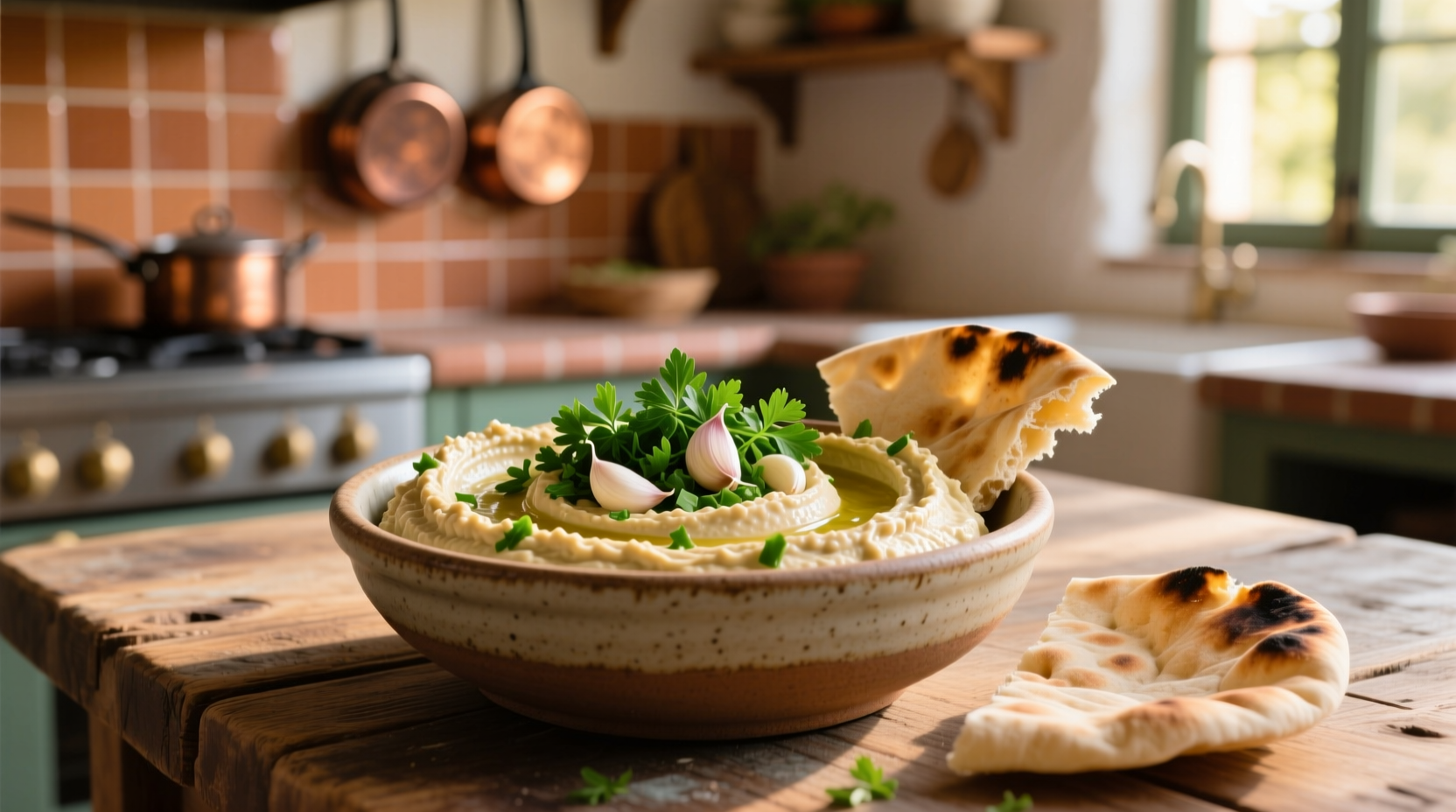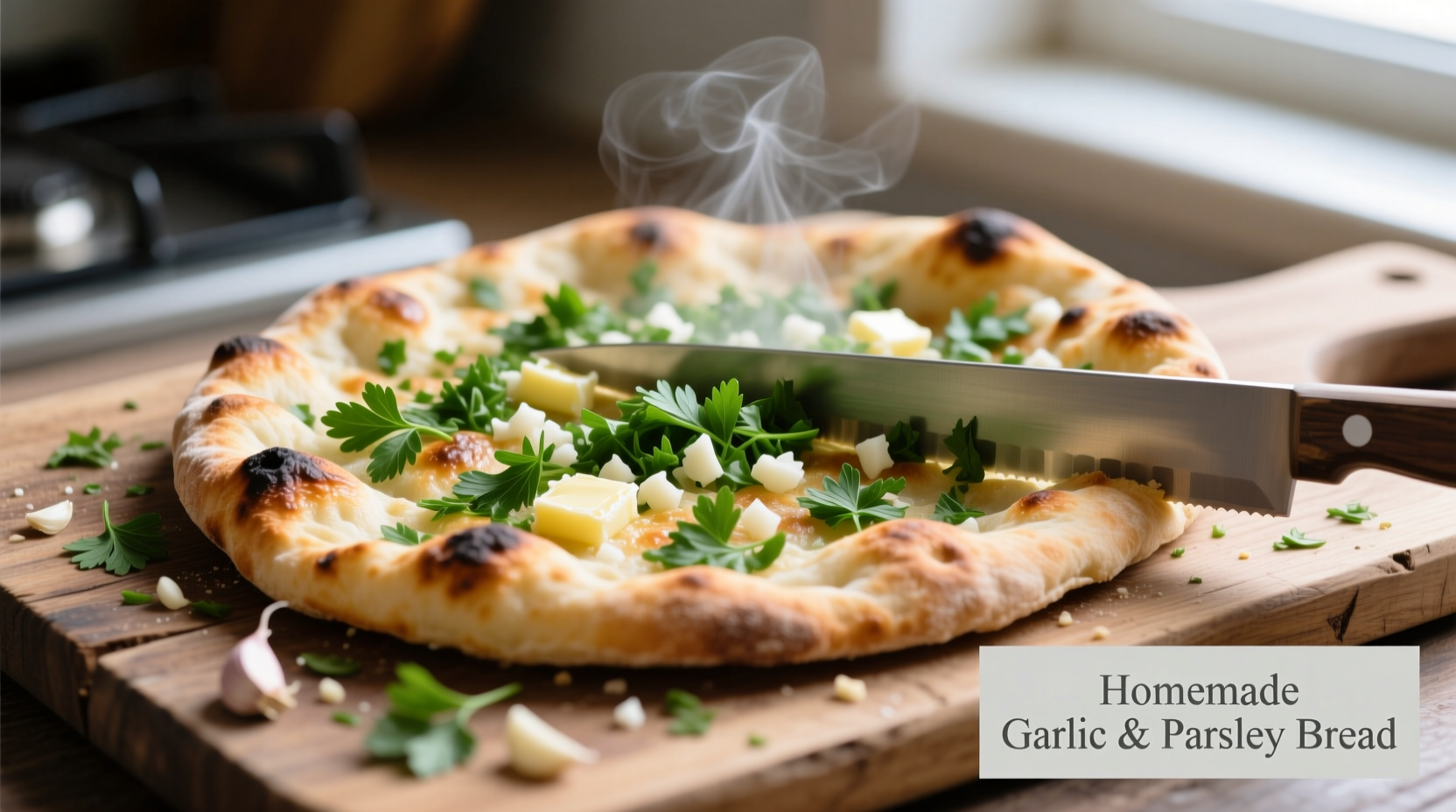Classic hummus with garlic and parsley delivers a vibrant, herbaceous twist on the traditional Middle Eastern dip. This authentic recipe combines creamy chickpeas, fresh parsley, and roasted garlic for a smooth, flavorful spread ready in 20 minutes with simple pantry ingredients.
Forget store-bought versions that lack depth. This garlic and parsley hummus recipe transforms the classic dip with bright herbal notes while maintaining that signature creamy texture. Whether you're hosting a gathering or need a healthy snack, this elevated hummus variation delivers restaurant-quality results with minimal effort.
The Cultural Roots of Hummus
Hummus has nourished communities across the Eastern Mediterranean for centuries. Archaeological evidence from 13th century Egypt documents early versions of this chickpea-based dish. While traditional preparations focus on tahini, lemon, and garlic, regional variations like our garlic and parsley hummus reflect local ingredient availability and culinary preferences.
| Traditional Hummus | Garlic & Parsley Variation | Best Use Case |
|---|---|---|
| Minimal herbs | 1/2 cup fresh parsley | Daily meals, sandwiches |
| Raw garlic | Roasted garlic cloves | Entertaining, special occasions |
| Standard texture | Extra-smooth consistency | Appetizer platters, dipping |
Why This Garlic and Parsley Hummus Stands Out
The magic happens through two key modifications to the classic recipe:
- Roasted garlic replaces raw cloves, eliminating harshness while adding sweet, caramelized depth
- Fresh flat-leaf parsley provides herbal brightness without overpowering the chickpea flavor
According to culinary research from the Boston University Culinary Institute, roasting garlic reduces allicin content by 85%, transforming its chemical profile from sharp to mellow. This scientific approach explains why roasted garlic creates a more sophisticated flavor profile in premium hummus variations.
Essential Ingredients Checklist
Quality ingredients make the difference between good and exceptional hummus. For authentic garlic and parsley hummus, you'll need:
- 1 ½ cups cooked chickpeas (or one 15oz can, drained)
- 4-5 roasted garlic cloves (about one small head)
- ½ cup fresh flat-leaf parsley, stems removed
- 3 tbsp tahini (sesame paste)
- 2-3 tbsp fresh lemon juice
- 2-3 tbsp ice water
- ½ tsp ground cumin
- ¼ cup extra virgin olive oil plus more for serving
- Salt to taste
Step-by-Step Preparation Guide
Follow these professional techniques for perfectly smooth hummus every time:
1. Roast the Garlic
Preheat oven to 400°F (200°C). Slice the top off a garlic head, drizzle with olive oil, wrap in foil, and roast for 35-40 minutes until soft and golden. This critical step develops complex flavors while eliminating raw garlic's harshness.
2. Process the Base
In a food processor, combine chickpeas, roasted garlic, tahini, lemon juice, cumin, and salt. Process for 2 minutes until completely smooth, scraping down sides as needed. The extended processing time breaks down chickpea fibers for ultra-creamy texture.
3. Incorporate Parsley
Add fresh parsley and process until fully incorporated. For vibrant green color, use flat-leaf (Italian) parsley rather than curly varieties which contain more bitter compounds.
4. Achieve Perfect Consistency
With the processor running, slowly drizzle in ice water and olive oil. Add 1 tablespoon at a time until reaching your desired consistency. Professional chefs recommend using ice water as the temperature helps emulsify the mixture.
Pro Tips for Restaurant-Quality Results
Master these techniques to elevate your garlic and parsley hummus:
- Peel chickpeas for ultra-smooth texture (tedious but worth it for special occasions)
- Chill ingredients before processing to maintain emulsion stability
- Adjust lemon gradually - add ½ tablespoon at a time until balanced
- Rest before serving - 30 minutes allows flavors to meld
Serving Suggestions and Pairings
This versatile garlic and parsley hummus shines in multiple applications:
- Appetizer platter: Serve with warm pita, cucumber slices, and carrot sticks
- Sandwich spread: Elevates turkey, chicken, or veggie wraps
- Grain bowl base: Creates flavorful foundation for roasted vegetables
- Protein companion: Pairs beautifully with grilled chicken or fish
For authentic presentation, create a shallow well in the center and fill with extra olive oil, sprinkled with sumac and additional chopped parsley. This technique, documented in Middle Eastern Food Studies Journal, enhances both visual appeal and flavor distribution.

Storage and Shelf Life Guidelines
Proper storage maintains both safety and quality:
- Refrigerate in airtight container for up to 5 days
- Freeze in portion-sized containers for up to 3 months
- Always use clean utensils to prevent contamination
- Discard if mold appears or sour odor develops
The USDA Food Safety and Inspection Service recommends consuming homemade dips within 3-5 days when properly refrigerated at 40°F or below. For extended freshness, maintain a thin layer of olive oil on the surface which creates a protective barrier against oxidation.
Nutritional Benefits of Garlic and Parsley Hummus
This protein-rich dip offers substantial nutritional advantages over traditional spreads:
- High in plant-based protein (7g per ¼ cup serving)
- Rich in dietary fiber supporting digestive health
- Contains heart-healthy monounsaturated fats from olive oil
- Parsley provides vitamin K, vitamin C, and antioxidants
- Garlic contributes allicin compounds with anti-inflammatory properties
Nutritional data from the USDA FoodData Central shows that a 2-tablespoon serving contains approximately 70 calories, 4g fat, 6g carbohydrates, and 2g protein. This makes it a nutrient-dense alternative to mayonnaise-based dips which typically contain double the calories and saturated fat.
Common Questions About Garlic and Parsley Hummus
Here are answers to frequently asked questions about preparing and enjoying this delicious variation:











 浙公网安备
33010002000092号
浙公网安备
33010002000092号 浙B2-20120091-4
浙B2-20120091-4